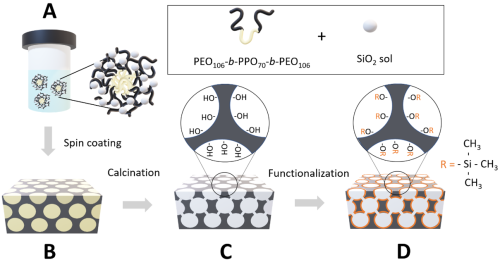Semilab publishes paper on Internal wettability investigation of mesoporous silica materials by ellipsometric porosimetry
01.16.2023

Silica-based mesoporous films have been widely applied in the fabrication of advanced functional materials, such as anti-reflective coatings, bio-, and chemical sensing devices, due to their unique properties, e.g., high surface area, controlled porosity, and the ease and tailorability of their synthesis. Precise knowledge of their pore architecture is crucial, highlighting the need for accurate characterization tools. In this sense, ellipsometric porosimetry represents a powerful and versatile characterization platform, providing access to reliable information about total porosity, pore size, pore size dispersity, mechanical properties (Young's modulus) and surface area of a great variety of mesoporous thin films.
While the underlying framework of modelling capillary condensation via the Kelvin equation is well established, one descriptor, the internal wettability of mesoporous architectures remains a challenging variable for reliable material characterization. Wetting on the nanoscale cannot be observed via the traditional drop-shape method, while approximating internal wetting by the macroscopic property can be inaccurate as the two wetting behaviors do not necessarily correlate. Herein, we present a method based on vacuum ellipsometric porosimetry for the determination of the internal contact angle of functionalized mesoporous silica thin films. Tuning of the surface energy for a known mesoporous architecture by methyl-functionalization enabled us to relate differences in the pore filling for various adsorptives (water, methanol, toluene, cyclohexane) to their internal contact angles. Our study serves as a guide for generalized internal contact angle determination suitable for a wide range of organic adsorptives and mesoporous sorbent materials.
If you want to know more about how ellipsometric porosimetry can be utilized as a reliable characterization platform, providing information about total porosity, pore size and other properties, read the full article in Thin Solid Films.





